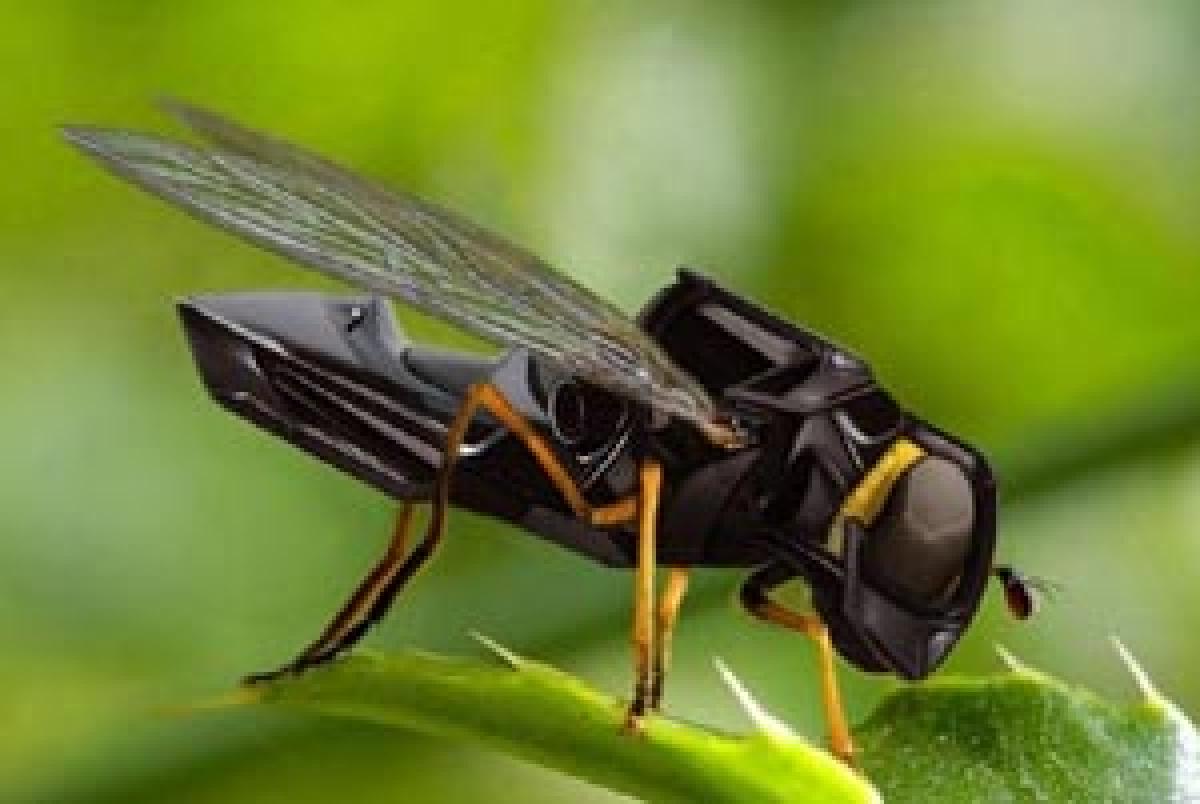Live
- Pilgrims throng Sabarimala temple on opening day of long festive season
- Jwala Thoranam held at Srisailam temple
- Birsa Munda Jayanti celebrated
- Another tigress released in soft enclosure in Similipal
- Coastal defence exercise on Nov 20-21
- Budget allocated for Perur reservoir rekindles farmers’ hope
- Majhi to embark on 4-day Singapore trip
- 22 Balaji MBA College students secure jobs
- Panel to resolve inter-State disputes
- Matric exam from Feb 21 to March 6
Just In

Inspired by nature, scientists have developed a new type of flying microrobots called \"RoboBees\" which can perch during flight like bats, birds or butterflies to save energy and stay in the air for long durations and help develop future drones.
Inspired by nature, scientists have developed a new type of flying microrobots called "RoboBees" which can perch during flight like bats, birds or butterflies to save energy and stay in the air for long durations and help develop future drones.
"Many applications for small drones require them to stay in the air for extended periods," said Moritz Graule, lead author from Harvard University.
Unfortunately, smaller drones run out of energy quickly.
"We want to keep them aloft longer without requiring too much additional energy," he added. Graule's team found inspiration in nature for their flying microrobots. "A lot of different animals use perching to conserve energy," said Kevin Ma, Harvard student who co-authored the study published in the journal Science.
But the methods they use to perch, like sticky adhesives or latching with talons, are inappropriate for a paperclip-size microrobot as they either require intricate systems with moving parts or high forces for detachment.
To fulfil this objective, the team used electrostatic adhesion that functions on the same basic science principles which cause a static-charged sock to cling to a pants leg or a balloon to stick to a wall.
"In the case of the balloon, however, the charges dissipate over time, and the balloon will eventually fall down," said Graule. "In our system, a small amount of energy is constantly supplied to maintain the attraction," he added.
The "RoboBee", pioneered at the Harvard Microrobotics Lab, uses an electrode patch and a foam mount that absorbs shock. The entire mechanism weighs 13.4 mg, bringing the total weight of the robot to about 100 mg similar to the weight of a real bee.
The robot takes off and flies normally. When the electrode patch is supplied with a charge, it can stick to almost any surface, from glass to wood to a leaf. To detach, the power supply is simply switched off.
"One of the biggest advantages of this system is that it doesn't cause destabilising forces during disengagement, which is crucial for a robot as small and delicate as ours," added Graule.

© 2024 Hyderabad Media House Limited/The Hans India. All rights reserved. Powered by hocalwire.com







